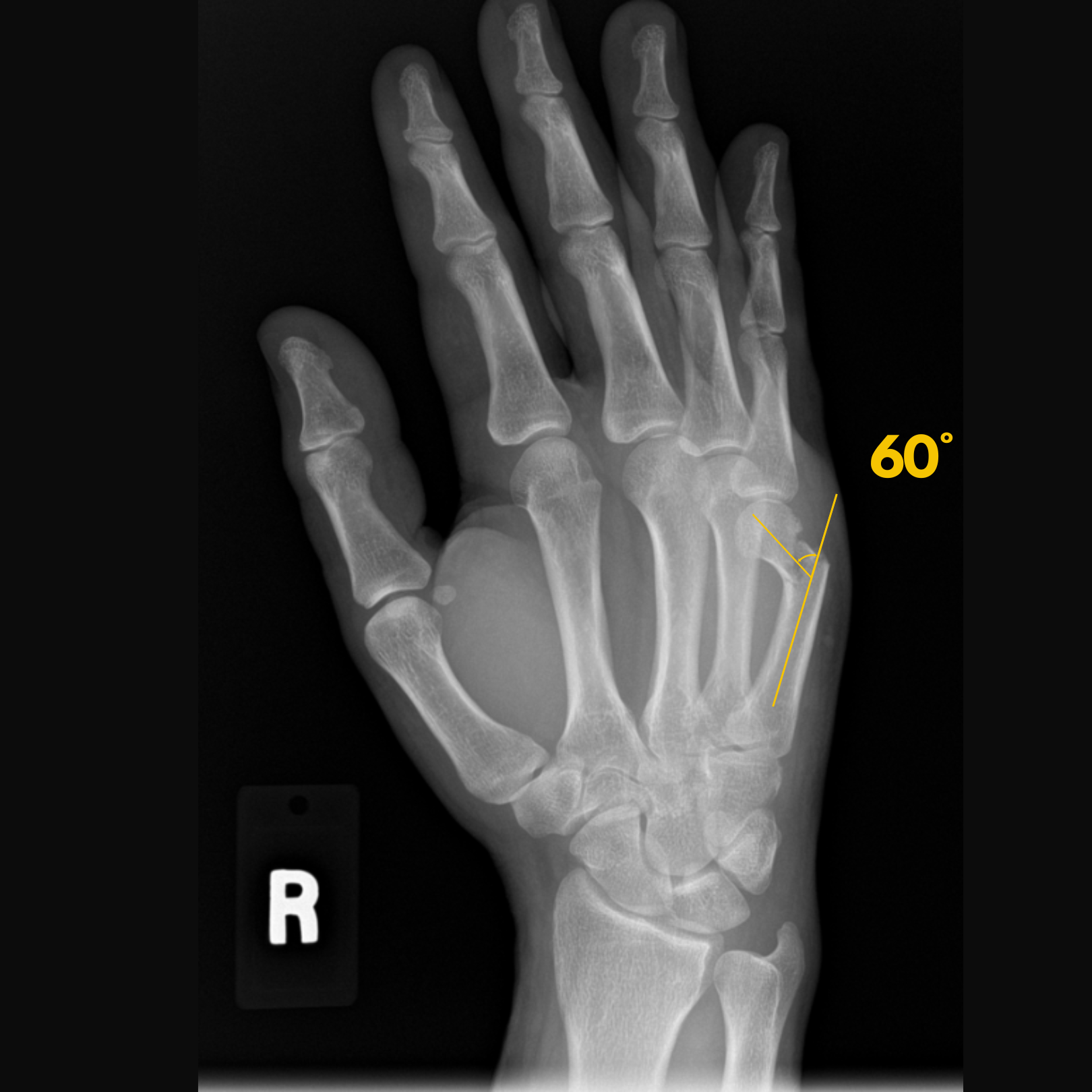What Is A Boxer’s Fracture? Does My Broken Hand Need Surgery
read time: 5 minutes
Laurie’s son Cameron is home from college for winter break. All his high school friends are back, and they are planning a night out at the bars this Friday. He has been texting with his high school girlfriend, hoping to rekindle what they once had — she’s planning to come out, too.
Friday night arrives and he meets up at his buddy Luke’s house for a couple drinks before heading out. As he pulls out his phone to call a ride, he sees a text from his ex-girlfriend. She’s no longer coming, as her new boyfriend flew into town to surprise her.
Cameron sees red. He had no idea. Before he can stop himself, he punches the wall of Luke’s bedroom, putting a hole in the drywall. He hears a sickening pop before a searing pain shoots through his hand and wrist…
In simple terms, a boxer’s fracture is a broken bone in the hand. Specifically, the break occurs in the hand bone (metacarpal) near the knuckle of your pinky finger.
As you might guess from the name, it almost always occurs from hitting an object. The force of the strike breaks the bone.
Yes, it occurs in boxers. But let’s be honest. Of every 10 of these I see, 9 come from intoxicated young males punching a wall.
Yikes.
How do I know if I broke my hand?
As with many broken bones, the symptoms and diagnosis are fairly straightforward. You will notice pain, bruising, and swelling at the pinky finger knuckle and across the back of the hand. This may lead to stiffness or loss of motion as well.
In some cases, the fracture is so bad, it will make your pinky finger crooked.
What I see more commonly is a visual loss of the knuckle and a large bump about a centimeter closer to the wrist from where the knuckle once was. This occurs when the broken bone has angled down towards the palm (see X-ray image below).
An x-ray will easily confirm the diagnosis, thus showing us a break through the fifth metacarpal neck (below).
Unfortunately, there is no secret trick to determining if you have a fracture without an x-ray.
There is also no difference between a break, a crack, or a fracture. These terms all mean the same thing.
How is a boxer's fracture treated?
The majority of boxer’s fractures can be treated without surgery. There is a lot of natural mobility through the pinky finger side of the hand — which means this fracture can heal very crooked and you can still have a normally functioning hand.
Below are the typical criteria we use for surgery:
Is the fracture angled towards the palm more than 50 to 60 degrees (see x-ray below)?
Is there an extensor lag (ie, are you unable to fully straighten your pinky finger)?
Is there sideways angulation or rotation of the finger?
The only caveat here is that if you and your doctor decide on non-surgical treatment, there will be a permanent visible ‘loss’ of the knuckle. There will also be a new bump about a centimeter closer to the wrist from where the knuckle once was. This is a small deformity that should not have any effect on the hand. It will essentially look like your knuckle moved.
A small visual change like this does not justify performing surgery if the hand is otherwise functional.
When I treat this without surgery, patients get a cast for a few weeks at most, and then we pretty quickly move towards rehab while the bone finishes healing (takes 6-8 weeks for healing).
If you do need surgery, we have a few different options depending on the specific pattern in which the bone broke. If very near the knuckle or shattered in pieces, we usually use smooth pins that stick through the skin known as k-wires.
Other times, I’m able to use stronger fixation, such as screws or plates. The stronger the fixation, the earlier we can start rehab after surgery. The earlier we start rehab, the less stiffness and more function the hand will have.
I’ll be sure to set aside a future post specifically for a deep dive into the various surgical options to fix boxer’s fractures.
Takeaways:
A Boxer’s Fracture refers to a specific pattern of fracture involving the pinky finger metacarpal near the knuckle
These are most common in, well, frustrated young males, to be frank
Most fracture patterns do not require surgery to regain full hand function — but if surgery is needed, we have multiple strategies available
Boxer’s fractures are incredibly common, and the majority of them will do great with minimal treatment. But determining if your fracture falls into that category is an important discussion to have with a hand surgeon.
Now that you have a grasp of the basics, I will be sure to build on this with more specific in-depth content on boxer’s fracture treatment in future posts.



